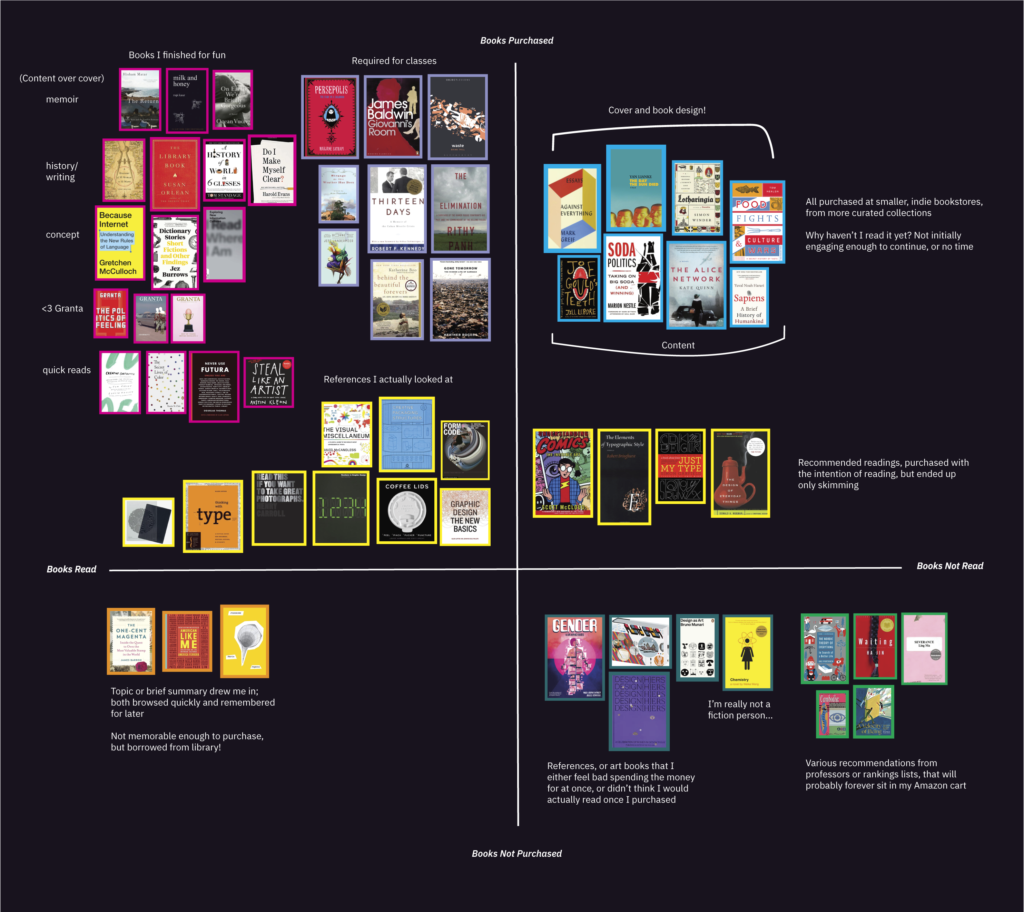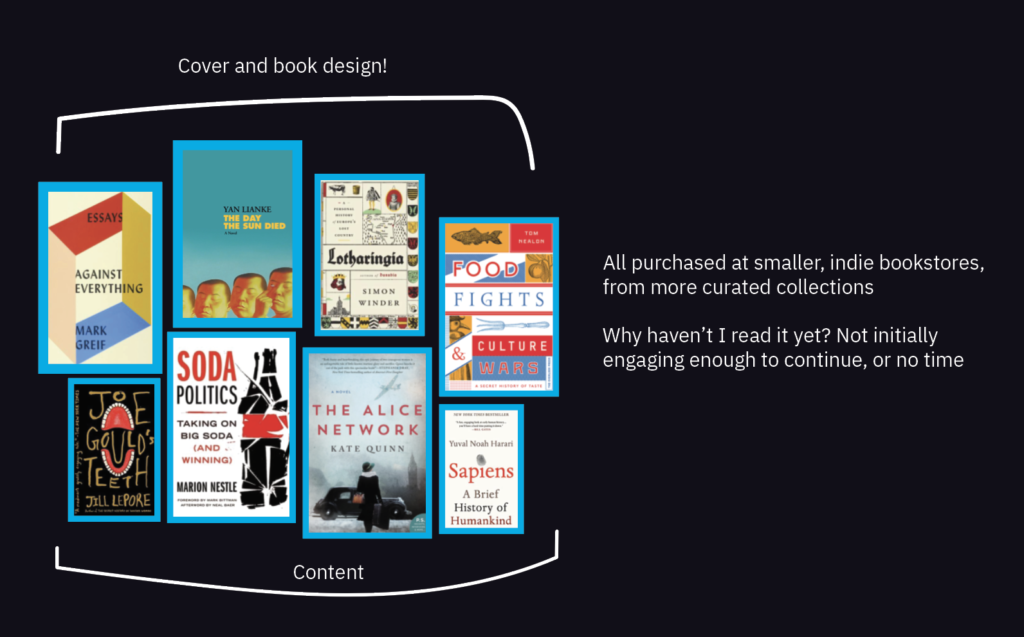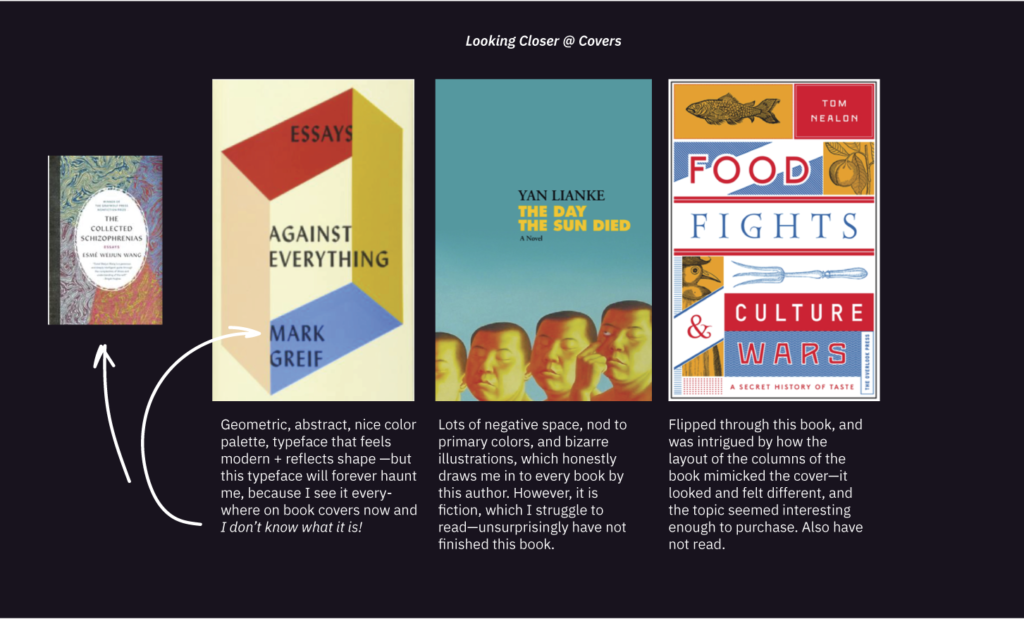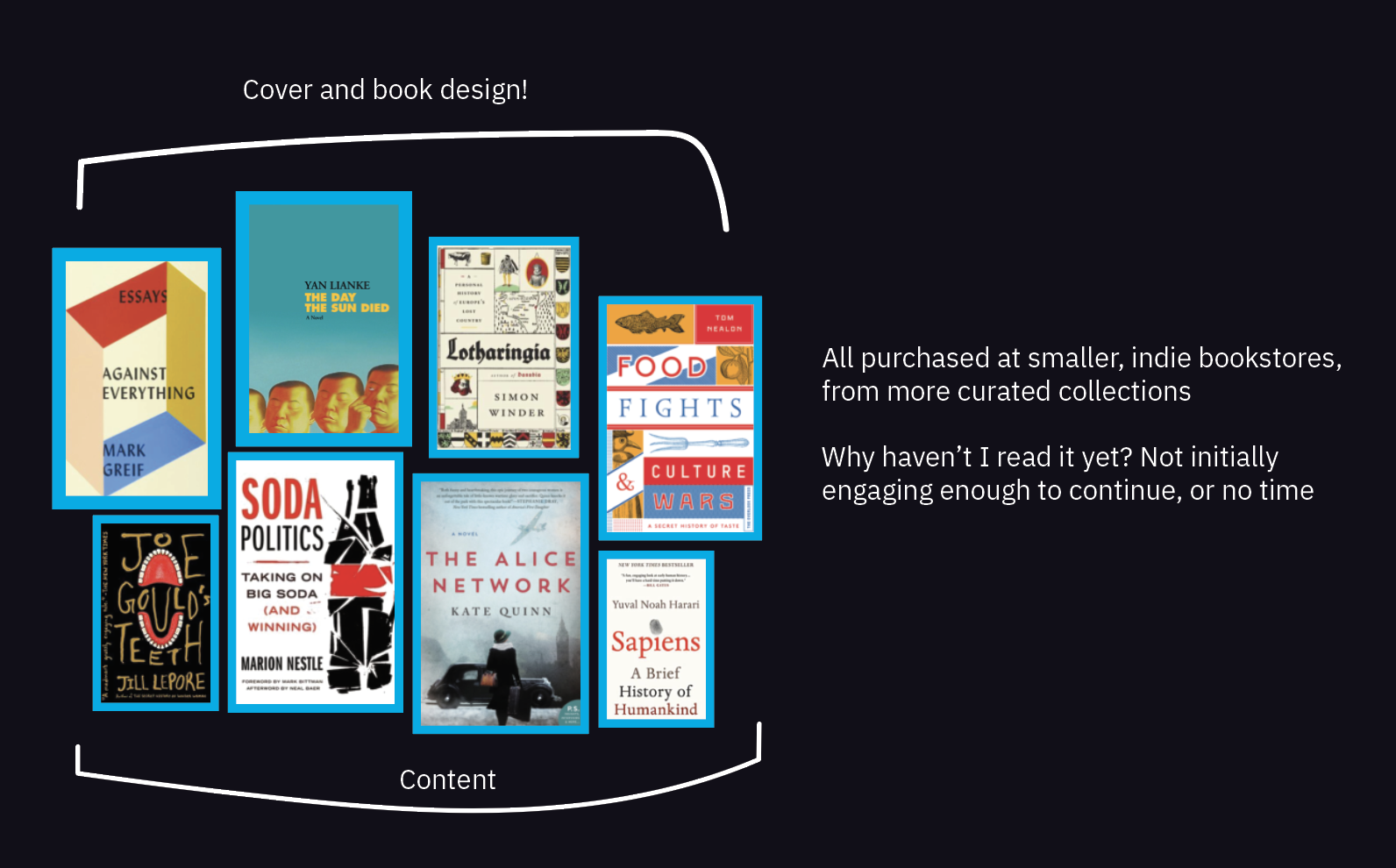I’m an avid reader, and when I get the chance, I love going to bookstores and perusing books. Over the past three years, I’ve amassed quite a number of books that I know I’m going to hate moving out later. However, I’m not extremely self-aware about what exactly I look for when browsing books on shelves, so I wanted to dig deeper into what draws me in to certain books over others, and the likelihood that I will actually read the book, based on my growing collection of books in Pittsburgh.
Some questions I looked at: What makes an attractive cover? Does the location that I look at/purchase the book affect how likely I will read it? How can I judge cover over content? What is the purpose of the book: for reference, as a guide, as a requirement, or because I was drawn to it?

I took the cover for every book that I have in my house/studio, and some books that I remember I have interest in, and grouped them on an axis of read/didn’t read and purchased/didn’t purchase. The ‘not purchased’ axis gives a reference for books-that-attracted-me, but for some reason or other were not persuasive enough in design or content for me to purchase. I also sorted all of the books based on purpose, because there is definitely a divide in the type of book that I own. The categories I sorted them into were: books I read for fun, books I read for classes, books I bought but didn’t read yet, design reference books, books I saved but didn’t purchase, and books I borrowed.

In grouping the books that I owned/had interest in, I realized just how important the location and curation was to my overall interest in the book. It would be interesting to plot the books on a third axis: looked at in-store or online? A majority of my book purchases for design references or for classes were online, but books I actually resonated with and read were found in-store. The type of book store mattered as well—in smaller indie bookstores I was more likely to spend on a book I wouldn’t read. This is probably due to the fact that many stores have staff recommendations, which I appreciate the time and effort and human-ness of the curation, which makes me more willing to trust in the store’s picks. I think part of me also has the mentality of “support small businesses!” and so I feel better buying from local stores over Amazon. Looking at books online, I am more persuaded by reviews and ratings (4/5 stars, critiques, etc.) than I would be shopping in-store, which is a level of participatory meta-data that isn’t provided in the physical experience.

I also picked up some patterns for what persuaded me to pick up a book in the first place. Covers are meticulously designed visual artifacts, and certain aesthetics that I generally find more attractive will more likely make me pick up a book. Unsurprisingly, the more ‘design’ or ‘designed’ a book is, the more likely I will at least flip through the summary. A well-designed cover made me more likely to pick up a book from a genre I wouldn’t usually read, like philosophy or fiction. Many of the books in the ‘not read’ spectrum were because I was drawn to the cover but not necessarily the content.

What does this mean when looking at books I’ve actually never read before? I went to the White Whale in Bloomfield and Caliban Books, over the weekend. I only ended up purchasing books from Caliban, despite rougher conditions and less updated content. Compared to looking at a web page of featured books from McNally Jackson (in Soho, NY, another bookstore that I love) the book selections were extremely different across all three.
Looking at everything overall, I realized how much other forms of media I consume reflects in the books I choose to read. Some of them I discovered through recommendations on podcasts that I listen to, or articles that I read from specific web sources. I think this raises a very relevant question on curation and algorithmic recommendation—I wonder how many books an AI recommends to me I would actually read.
—Alice Fang
